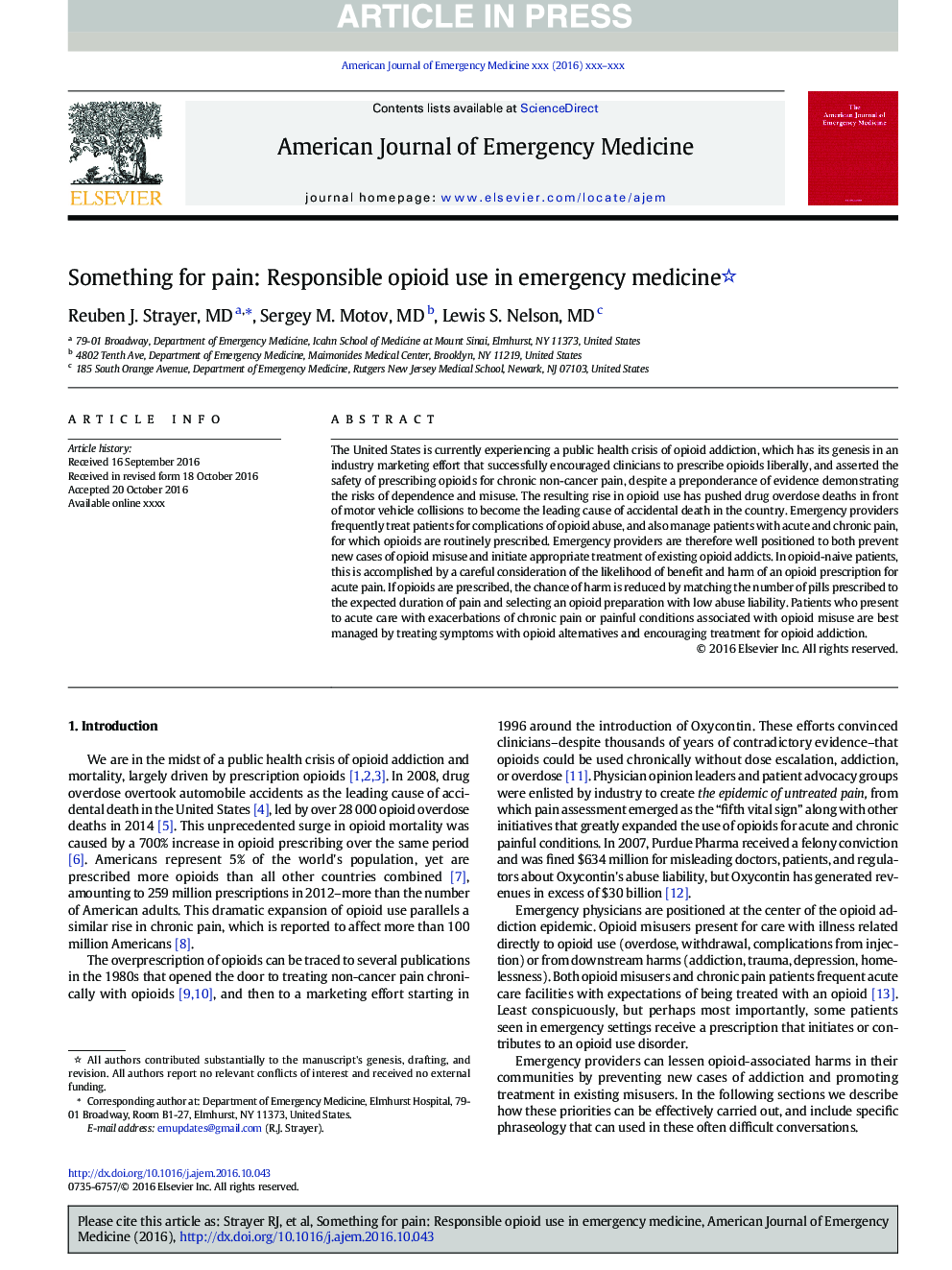| Article ID | Journal | Published Year | Pages | File Type |
|---|---|---|---|---|
| 5651036 | The American Journal of Emergency Medicine | 2017 | 5 Pages |
Abstract
The United States is currently experiencing a public health crisis of opioid addiction, which has its genesis in an industry marketing effort that successfully encouraged clinicians to prescribe opioids liberally, and asserted the safety of prescribing opioids for chronic non-cancer pain, despite a preponderance of evidence demonstrating the risks of dependence and misuse. The resulting rise in opioid use has pushed drug overdose deaths in front of motor vehicle collisions to become the leading cause of accidental death in the country. Emergency providers frequently treat patients for complications of opioid abuse, and also manage patients with acute and chronic pain, for which opioids are routinely prescribed. Emergency providers are therefore well positioned to both prevent new cases of opioid misuse and initiate appropriate treatment of existing opioid addicts. In opioid-naive patients, this is accomplished by a careful consideration of the likelihood of benefit and harm of an opioid prescription for acute pain. If opioids are prescribed, the chance of harm is reduced by matching the number of pills prescribed to the expected duration of pain and selecting an opioid preparation with low abuse liability. Patients who present to acute care with exacerbations of chronic pain or painful conditions associated with opioid misuse are best managed by treating symptoms with opioid alternatives and encouraging treatment for opioid addiction.
Related Topics
Health Sciences
Medicine and Dentistry
Emergency Medicine
Authors
Reuben J. MD, Sergey M. MD, Lewis S. MD,
